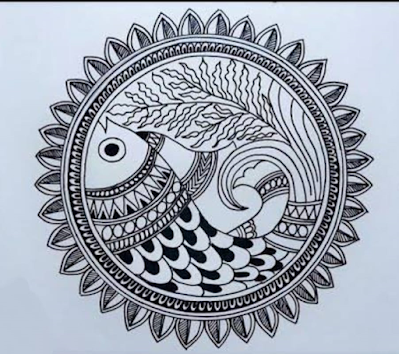Exploring Unique Cultural Treasures: Mithila Painting and Korean Traditional Painting.
Exploring Unique Cultural Treasures: Mithila Painting and Korean Traditional Painting
Art serves as a mirror reflecting the essence of a culture, capturing its history, beliefs, and aesthetic sensibilities. Mithila painting from India and Korean traditional painting are two remarkable art forms that have stood the test of time, each carrying a unique value within their respective cultures. Despite their geographical and historical differences, these art forms share common threads of storytelling, symbolism, and cultural preservation.
Mithila Painting:
A Glimpse into Indian Folklore Mithila painting, also known as Madhubani art, originates from the Mithila region of Bihar, India. Rooted in ancient traditions, this vibrant art form is deeply intertwined with daily life and rituals. Typically created by women, Mithila paintings are characterized by intricate detailing, bold colours, and strong geometric patterns. The themes often revolve around mythology, folklore, and nature.
The walls of homes in the Mithila region are adorned with these paintings, which are not merely decorative but also hold spiritual significance. The art form has been passed down through generations, preserving cultural stories and values. From weddings to festivals, Mithila painting plays a vital role in celebratory rituals, turning walls into vibrant canvases that communicate tales of gods, goddesses, and local narratives.
I proudly call Mithila, the heart of Bihar, my home. This vibrant region has not only shaped my identity but also fueled my passion for Mithila painting, which I have been practicing for many years. Through the intricate strokes and vivid colors of this traditional art form, I connect with the rich cultural heritage of Mithila and contribute to its preservation. It's in the heart of this land that my artistic journey blossomed, and I continue to draw inspiration from its deep-rooted traditions and artistic legacy.
Korean Traditional Painting:
Capturing Tranquillity and Spirituality
Korean traditional painting, known as "hwa-eom" or "minhwa," carries a serene beauty that reflects the essence of Korean spirituality and aesthetics. Rooted in Confucian, Buddhist, and Taoist philosophies, these paintings often depict landscapes, nature, and religious figures. The use of ink and subtle colour palettes creates an atmosphere of tranquillity and contemplation.
One of the most iconic aspects of Korean traditional painting is the portrayal of the "cheonhwa," or the "literati" style, which emphasizes the inner world of the artist. This style reflects the artist's emotions, thoughts, and spiritual connection with nature. Korean traditional painting captures a harmonious blend of stillness and movement, inviting viewers to appreciate the delicate balance between the physical and metaphysical.
Common Threads:
Storytelling and Cultural Preservation
While Mithila painting and Korean traditional painting come from distinct cultural backgrounds, they share a common goal of preserving stories and traditions. Both art forms serve as visual narratives that bridge the gap between generations, passing down cultural heritage and values.
Mithila paintings transmit stories of deities, heroes, and everyday life, embodying the vibrancy of Indian folklore. Similarly, Korean traditional paintings encapsulate the spiritual essence of the Korean landscape, historical figures, and philosophies. Both art forms hold the power to connect people with their cultural roots, fostering a sense of identity and continuity.
Mithila painting:
Minhwa painting:
Conclusion:
Mithila painting and Korean traditional painting stand as testament to the enduring power of art in preserving cultural legacies. These art forms transcend borders and time, offering us windows into the hearts and minds of different cultures. As we celebrate the uniqueness of Mithila painting and Korean traditional painting, we are reminded of the universal language of art that speaks to our shared human experience.









댓글
댓글 쓰기